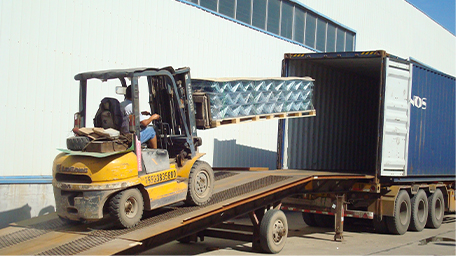
- Mobile Phone
- +8613931874955
- sales@cntcmetal.com
field fence installation
Field Fence Installation A Comprehensive Guide
When it comes to securing agricultural fields, protecting livestock, or marking property boundaries, installing a field fence is an essential task for many landowners. A properly constructed field fence can provide safety, reduce animal escape, and keep unwanted intruders out. Whether you're a seasoned farmer or a first-time landowner, understanding the nuances of field fence installation will help you make informed decisions and achieve a successful outcome.
Choosing the Right Materials
Before diving into the installation process, it's crucial to select the right materials. Field fences come in various materials, including wire, wood, and welded mesh. Wire fences are commonly used for livestock because they are durable and relatively low-maintenance. Barbed wire is another popular choice, especially for cattle ranching, as it prevents animals from breaking through.
Wooden fences provide a more aesthetic appeal and can be used for decorative purposes. However, they may require more maintenance due to weather changes. For gardens or fields where smaller animals might be an issue, welded wire mesh provides an additional defense, preventing intruders from burrowing underneath.
Planning Your Fence Line
Once you have selected the appropriate materials, the next step is to plan your fence line. Survey the area to determine the boundaries of your property and any existing structures or natural landmarks. It’s a good practice to create a detailed map outlining the fence's intended path.
Considerations during this phase include terrain changes, nearby water sources, and the type of livestock or crops you are protecting. Proper planning will save time, money, and effort in the long run.
Gathering Tools and Equipment
To facilitate the installation process, gather the necessary tools beforehand
. Key items include- Fence posts (wooden or metal) - Wire rolls (depending on your chosen material) - Post hole digger or auger - Hammer or post driver - Wire cutters - Tensioning tools - Measuring tape - Level - Safety gear (gloves, safety glasses)
Having these tools ready will ensure the installation process runs smoothly.
field fence installation

Installing the Fence Posts
The next step is to install the fence posts. Start by marking the location of each post based on your planned layout. The distance between posts typically ranges from 8 to 12 feet, depending on the type of fence material used.
Once marked, use the post hole digger to create holes about 2 to 3 feet deep. This depth is critical for ensuring stability, especially in regions that experience harsh weather conditions or high winds. Place each post in its hole, ensuring they are plumb using a level. Fill the hole with concrete or packed dirt to secure the posts firmly in place, allowing them to set for at least 24 hours.
Attaching the Fence Material
After the posts are set, it’s time to attach the fence material. If you are using wire fencing, unroll the wire along the length of the fence line. Start at one corner and securely tie the wire to the first post before unrolling toward the next post. Tension the wire as you go—this is crucial to maintain the integrity and durability of the fence.
Use tensioning tools to ensure the wire is taut and then attach it to each post using staples or clips. For barbed wire, be cautious while handling, as Barbs can cause injury. If using wooden panels or mesh, secure them likewise, ensuring they are even and aligned.
Finishing Touches and Maintenance
Once the fence is installed, perform a final inspection to ensure everything is secure. Check for any loose wires or gaps that could allow livestock or wildlife to escape. Trim any overgrown vegetation near the fence line to prevent future issues.
A field fence requires ongoing maintenance to remain effective. Regularly inspect for wear and tear, especially after severe weather. Tighten any loose wires and replace damaged posts or panels as needed.
Conclusion
Installing a field fence may seem daunting, but with proper planning and the right materials, it can be a straightforward task that provides substantial benefits. A well-built fence will offer protection for your property and peace of mind for years to come. Whether you’re looking to contain livestock or delineate property lines, investing the time in a robust fence installation will ultimately pay off in security and functionality.
share:
-
Your Source for Concrete Wall Ties and Masonry AccessoriesNewsJul.10,2025
-
Unlocking the Power of Iron Wire for Every ProjectNewsJul.10,2025
-
Explore Advanced Chain Wire and Stainless Steel Mesh FencingNewsJul.10,2025
-
Discover the Benefits of Annealed Wire ProductsNewsJul.10,2025
-
Discover China Stainless Steel Wire Mesh SolutionsNewsJul.10,2025
-
Build with Confidence Using High-Performance Masonry AccessoriesNewsJul.10,2025
-
Why Sacrificial Formwork Is Redefining Underground ConstructionNewsJun.06,2025



















